We have all been there…well, maybe not ‘all’ of us but at some point in our lives most of us will be told by a doctor or decide for ourselves that we need to change our diets. Whether the change is motivated by a food intolerance, a chronic health issue, weight gain or simply a lack of energy and not feeling our best, changing lifelong eating habits can be rough.
I have revamped my diet twice because of kidney stones and my daughter had to eliminate dairy and gluten…so I know the ins and outs and effort required when moving forward with a new eating plan. I would love to share what I have learned with you. I have also recruited three blogging friends that have had to make drastic alterations to their diets due to chronic illness and are sharing their experiences at The Organic Kitchen today. We will be exploring four anti-inflammation diets: Whole 30, Auto Immune Paleo (AIP) Diet, The Anti Candida Diet and The GAPS (Gut and Psychology Syndrome) Diet. All four of these diets have some very basic similarities; they are all grain free, limit or omit dairy, soy, sugar, artificial sweeteners and other inflammatory foods but more importantly they all require total commitment.
It’s Not Just About Will Power
I have seen many people try these protocols and experience huge success, I have also seen many try and fail. I believe succeeding is not just about will power, although that certainly is a big part of it. There are pitfalls that can be avoided and some preparation and expectations that can make the transition to a new diet and lifestyle easier to handle. Now, let’s get to it with tips and helpful hints from people who have been in the trenches!
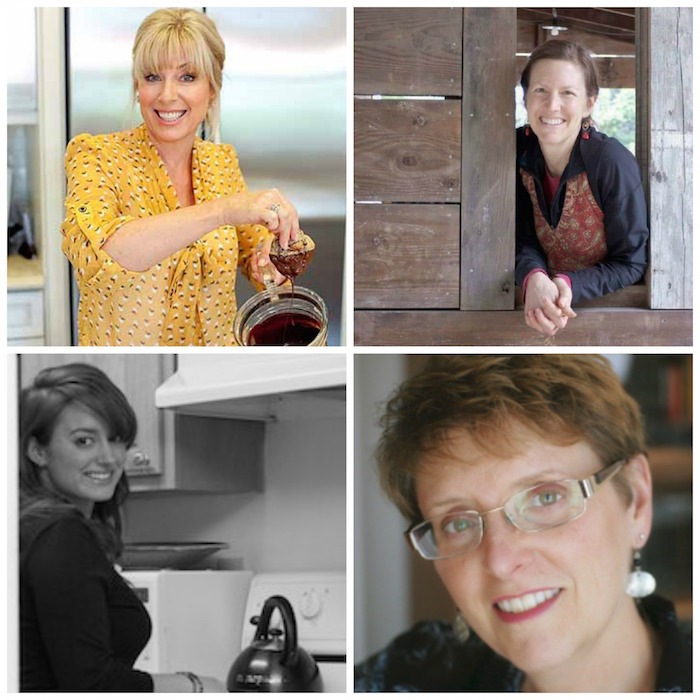
So you have to change your diet…now what?
Our first reaction when being told we have to change our diet is often denial. We just don’t want to believe something we do and enjoy on a daily basis may have caused or at the very least contributed to our health issue. I have known people with very serious health issues whose doctors have told them flat out their health problem was caused by diet and lifestyle and yet they don’t change a thing!
This is because what we eat and how we eat is a ritual for most of us. We eat things that appeal to us emotionally, things we ate as a child, and foods that comfort us. We establish a ritual around that food such as drinking coffee while we read the paper, meeting friends at a fast food place while we let the kids play, or going out for drinks after work to unwind. And sometimes when we have eaten a certain way for a long time we simply forget HOW to eat any other way! If you have been eating processed food for 30 years changing your diet may mean having to learn to shop for and prepare and cook food for yourself, it can be overwhelming. But trust me when I tell you the rewards are great. And when you accept the fact that feeling good and having physical and mental well being is more important than eating junk, all aspects of your life can improve!
What to Expect: Some Serious Crankiness and Then Some Miracles
I compare changing your diet to a rocket taking off. Most of the fuel (energy) is expended on ‘take off’. Once in the air, the rocket just coasts. Its the same with diet. You will expend most of your energy in the beginning, researching your new diet, learning to shop, prepare and cook new foods, and resisting the cravings for your old foods. This can make you cranky and less than pleasant to be around. After some time (it varies from days, to weeks depending on the person) you begin to coast and the sun rises on a new day! The cravings subside, you learn that these new foods actually taste better than the processed crap you used to eat and you feel great! Having energy, sleeping better, having your doctor tell you your ‘numbers’ are better, fitting your skinny jeans, seeing a chronic health issue go into remission are all so much better than eating the foods that caused or contributed to your health crisis in the first place. So hang in there, the tough part is temporary, and the rewards of good health last a long time!
Your Social Life Will Change:
Sorry but it’s true. If you lunch with co-workers at fast food joints or have poker nights with the guys where chips and pizza are the healthiest food choices offered your plans OR your friends will have to change.
Support from Friends and Family May Not Be Forthcoming
When you first change your diet friends and family may not be totally supportive. Some will even wave forbidden foods in front of you and say ‘you know you want this’… I believe there are a couple of reasons for this, one is that they worry your new lifestyle will impact your relationship with them and the other, even though this is totally untrue, is that some people will believe that you are judging them for their food choices when in fact you are spending so much time thinking about your new food choices you really have no time or inclination to judge theirs!
It is important to explain to friends and family why you are changing your diet and then ask them outright to make it easier for you. Explain you will have a hard time and would appreciate their support. Let them know that you are willing to bring your own food to get togethers so they won’t be inconvenienced. Then be sure to tell them when you see improvements in your health. Rave in front of them so they will be inspired to help even more. Friends and family ultimately want what is best for us and when they see we are doing better they will be happy to support us. (The following posts contain Amazon affiliate links)
My Husband’s Story: The Whole 30
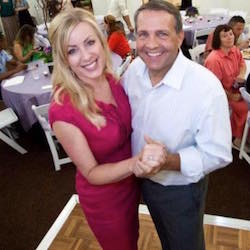
Fortunately my husband did not have a serious health condition that spurred a change. He had much more common symptoms: some extra weight, some ‘numbers’ his doctor didn’t love, and chronic knee pain. My husband was facing a total knee replacement and he just couldn’t deal with scheduling it because he is a golfer, he had tournaments lined up that he didn’t want to miss. Let’s face it there is no good time to have your knee joint replaced. I talked to him about several anti-inflammatory diets that could improve the inflammation in his knee, delaying or perhaps preventing the need for surgery altogether. He agreed to The Whole 30. As mentioned above Whole 30 eliminates all inflammation causing foods: grains, dairy, legumes, sugar, artificial sweeteners, and soy for 30 days. The hope is you will feel so great after 30 days that you continue with the diet. On this plan you eat lot’s of healthy vegetables, meats, eggs and fruit.
We started the eating plan together, it’s easier to succeed if you have the support of a spouse. That is my number one tip. Support your spouse. Even if you eat off plan while you are away from them, eat what they eat when eating together. I think this is crucial! If I had been eating grains and sugary desserts in front of him he never would have made it the 30 days much less wanted to continue after.
My husband loves his sugar. He was cranky…really cranky…(for the whole 30 days) The first week was especially rough but within that week a benefit we never expected happened. He stopped snoring (snoring is caused by inflammation) ahhhhh motivation to continue! After two months he had lost 20 pounds (more motivation!), every ‘number’ got better, but the biggest thing for him was that the inflammation in his knee decreased more and more every week. His limp slowly went away. He has limped for 15 years! He even stopped going to the orthopedist for injections that lubricated his knee. He looked and felt great. The power of an anti-inflammation diet is hard to ignore!
That was a year ago, since then my husband has had his ups and downs. Which brings me to another tip. Don’t think of your eating plan as a temporary diet. Think of it as a lifestyle choice. When my husband sticks with the plan his symptoms get better, when he doesn’t his symptoms return. So stick with it, be consistent, if you mess up, it’s ok just get back on the plan that works for you right away. Consistency is key. ~ Linda Spiker
Samantha McCellen: Auto Immune Paleo (AIP)
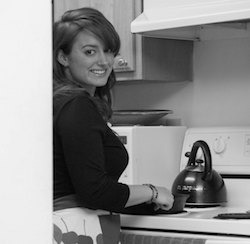
Samantha blogs at Sweet Potatoes and Social Change sharing recipes and health tips for those that struggle with autoimmune diseases. Samantha follows The Auto Immune Protocol:
I was diagnosed with ulcerative colitis in 2011 at the age of 21. I went on medication, but a few months later a coworker introduced me to the paleo diet and when I researched it I learned that a lot of people had used it to successfully manage their chronic illnesses. I was intrigued so I decided to try it. My ulcerative colitis went into remission and was well managed for about a year when I started have flares again. In July of 2013 I became especially ill and experienced a severe flare that lasted for over six months. It was at that point when I started researching the autoimmune protocol diet. After being so sick for so long, in spite of following the paleo diet, I was skeptical that removing even more foods from my diet was the answer, but I was desperate so I committed and gave it a try. Within three weeks many of my primary flare symptoms had resolved.
The Autoimmune Paleo diet is a subset of the paleo diet formulated specifically for people suffering from autoimmune conditions. It works by eliminating all foods that are potential allergens, inflammatory, or bad for the gut and adds in foods that are nourishing and helpful in restoring balance to the digestive tract. The idea being, that the underlying cause of the bodily autoimmune response has its roots in a damaged gut lining. Once you begin seeing healing you then work through a reintroduction process that allows you to see what specific foods are triggers for you. The protocol also outlines some helpful lifestyle modifications such as ways to get good sleep, stress management, and medication management that also contribute to autoimmune disease management.
I will say that for me personally going from the paleo diet to the autoimmune protocol made the transition much easier than it would have been if I had gone directly onto the protocol from the standard American diet. However, even with that experience it was still a process to adjust to life following the autoimmune protocol. It is hard to have so few convenient food options, it requires a lot of cooking, and it takes a while for your social circle to adjust to your limitations, but when you and your loved ones start to see that it is helping it all does become worth it.
The advice I would give to anyone starting out on the autoimmune paleo diet is to come up with a batch cooking routine and stick to it. Batch cooking allows you to make the most out of your time in the kitchen and it helps ensure that you will have food ready to eat during the week when you are starving and running around at work or with kids and don’t have time to cook. Being caught hungry and unprepared is the worst thing you can do to yourself. Outside of that, always remember to pack food. I always carry an epic bar or a bag of plantain chips in my purse in case I get stuck somewhere or I have to go to a function where I can’t eat the food. Plan ahead and you will be successful.
I have been on the autoimmune protocol for almost a year and half and the healing I have seen take place is remarkable. My ulcerative colitis symptoms are better managed than I ever thought possible. I have experienced one stress induced flare since being on AIP and the severity was so much less than before that I was able to keep living my life and get it back under control without any major medical intervention. Outside of that, my overall immune health is so much better. I made it through the entire winter without getting sick at all, which has never happened to me. I haven’t had a need for antibiotics in over two years, and when I do get sick my body can actually fight it off and recover which it never used to do. My weight fluctuates much less than it used to and my skin cleared up and become much healthier after a few months on the diet. Overall I can’t think of an area of my health that hasn’t improved since being on the autoimmune protocol.
Ricki Heller: The Anti Candida Diet

Ricki Heller, RHN, PhD, is a holistic nutritionist, whole foods chef, writer and educator who shares sugar-free, gluten-free, allergy-friendly recipes and healthy living articles on her popular blog, RickiHeller.com. Ricki shares her own story of learning to thrive on an anti-candida diet and shows audiences how easy it is to eat well on a “restricted” diet—proving that a healthy lifestyle can, indeed, be sweet! Ricki is also the author of Living Candida-Free.
Although I already knew what candida (and overgrowth of yeast in the body) was because I had been first diagnosed in 1999, I thought I was done with it. Then, in 2009, I got a rash on my chest that itched and was painful and just wouldn’t go away. The dermatologist gave me cream after cream and nothing seemed to work. Meanwhile, the rash spread and became quite alarming when it kept moving and finally arrived at my belly button.
Eventually, I was able to find a holistically-minded doctor who prescribed a prescription anti-fungal pill that gave me some relief. At the same time, I also started a very strict anti-candida diet, a detox regimen and a list of natural antifungal supplements. I ended up staying on the strict program for about 6 months and remain on a slightly looser version of the diet until this day. It took a full six months, though, before I had any real progress with my symptoms.
Because the diet is designed to first, starve any overgrowth of yeast in the body and second, prevent further yeast from growing, it is a very low-sugar and low carb diet (since yeast feeds on sugars). Most anti-candida diets don’t allow fruits, any sweeteners (except stevia or xylitol), refined grains, gluten, red meat, dairy, eggs, alcohol, coffee, or anything packaged or processed. Basically, you eat vegetables, nuts, seeds and herbal teas. In my case, I also include small amounts of gluten-free whole grains and beans or legumes each day. Omnivores can include poultry and fish.
The diet also focuses on foods that work to kill the candida (such as coconut, which has antifungal properties), or naturally fermented sauerkraut, which provides probiotics to help replace those that were crowded out by the fungus.
I had almost unbearable sugar cravings, which makes it difficult to cut out all sugar. In fact, most people with candida have cravings, since that’s the yeast demanding its food. There are also challenges with eating in public or social situations, such as restaurants, since most establishments don’t really provide candida-friendly menus. Having been on this diet for so many years, though, I’ve worked out a huge list of strategies and tactics that I share in my book, Living Candida-Free, so that people can stay on the diet and stick with it even when they continue to live their “real life.”
Another issue is that people with candida generally feel quite unwell, so it can make it more challenging to do all the cooking and stay motivated. But the outcome is so, so worth it!
Instead of focusing on what you’re missing, focus on what you will gain. I did miss some of my old favorite foods, but I also found many new foods that I love equally well; and I’ve managed to re-create all my favorites in a form that is consistent with the anti-candida diet. I eat chocolate chip cookies, ice cream, brownies, chocolates, eggplant parmesan, gnocchi, pizza—well, you get the idea. These recipes all taste great, and it’s wonderful to be able to continue to share meals with my husband (who eats everything I cook). The foods are just made from different ingredients than conventional versions, and are a lot healthier for me now!
I spent a lot of time thinking about the goal—getting better, feeling good, ridding my body of the terrible candida symptoms. That’s what kept me going even when it was difficult or when I was under pressure from friends or family to “just eat it” when they assumed my diet was a bunch of hogwash.
I saw all of my symptoms improve and almost disappear in the time that I followed the program strictly. These days, I rarely think about candida as a problem unless I eat something that I really shouldn’t (such as 4 of my anti-candida brownies in one day). If I’m traveling and feeling stressed out, my rash can begin to itch again. But for the most part, I feel that giving up sugar and gluten forever is a very small price to pay for good health. I have my energy back, I no longer have brain fog, and the external symptoms are definitely manageable. Plus, I discovered a whole new world of healthy, whole foods that I absolutely love.
I’ve come to believe that EVERYONE can get better with the right treatment, motivation and patience. Most people just give up too soon. Stick with it, don’t waver, keep your eye on the ultimate goal, and you will heal! ~ Ricki Heller
Megan Stevens: The Gut and Psychology Syndrome (GAPS) Diet
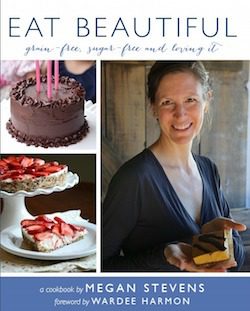
Note: The GAPS diet and book was designed by neurosurgeon Dr. Nastasha Campbell McBride for the treatment of Autism. Along the way Dr. McBride noticed many autoimmune diseases, anxiety, OCD etc.. were also greatly improved or went into complete remission while on the GAPS Diet and it became a healing protocol for diseases besides autism.
Hi I am Megan Stevens, blogger at Eat Beautiful and recently published author of “Eat Beautiful: Grain Free, Sugar Free and Loving It”. My family started the GAPS diet due to some obvious health issues: my daughter had a serious case of asthma; my son was dyslexic; I had two autoimmune diseases, a bladder disease and was struggling to heal a rash on my face. I also started having arthritis in my fingers and hands in my mid-30’s! When I read the premise to the GAPS diet, that healing happens when we restore the health of the gut, I was very open to a new diet to help bring about that change.
The GAPS Diet includes eliminating all grains and all sugar (although honey and stevia are allowed) and emphasizes eating foods that are gentle on the digestive tract. It also emphasizes staples to restore the gut’s health: bone broth and fermented foods (such as long-fermented yogurt or living sauerkraut). Fat and cholesterol are the good guys; starches are avoided. All foods including vegetables should be cooked for easy digestion.
Starting any new diet is hard, especially when it includes breaking one’s addictions to sugar and caffeine, not to mention overcoming comfort-food habits like eating cold cereal, dark chocolate and ice cream. The first part of GAPS is more stringent. It was a tough transition.
Beyond just the cravings, my body had an overgrowth of pathogens. So when I stopped eating sugar and grains there was a mass die-off of these bad bacteria, which made me feel weak and exhausted. Ongoing difficulties included relapses of die-off.
Changing one’s diet is foundational to healing; but that doesn’t mean most people are healed by changing their diet alone. Another difficulty has been continuing the sleuthing process to optimize and complete my healing, meaning which supplements are needed and what exact health diagnoses am I trying to put into remission. When you know your own body’s weakest links it is easier to address those issues and heal them.
My best advice when starting a healing diet is don’t cheat, ever. Instead, find “legal” cheats, choose a few foods that are allowed, but that are still indulgent and let yourself have more of those until your addictions and cravings pass. Figure out what legal cheats you need to stay in the game and eventually scale them back if you think it will be beneficial.
Clean out your entire pantry and fridge before beginning.
The benefits of the GAPS diet for me were amazing! Immediately upon giving up grains and sugar my face rash and arthritis went away! My bladder disease and Reynaud’s Syndrome went away too, after several weeks on the GAPS Introduction Diet. This was major dramatic healing.
I am still not completely well. As I said above, the diet will take care of the most foundational, essential healing; yet there is still some digging that needs to be done, for some of us, before all of our ailments are healed. Why do I still have hope? I still see progress. The diet is the home base from which I explore other remedies, always with the assurance that I will find more answers.
~ Megan Stevens
If you would like to order Megan’s GAPS cookbook “Eat Beautiful” click here for Kindle and here for softcover.
The End Game
If you have to change your diet I hope the advice given above helps ease the transition. My favorite suggestions from the posts above are the ‘batch cooking’ and finding ‘legal cheats’ tips, and focusing on wellness and all the delicious foods you can eat instead of what you can’t. Physical and mental health are inextricably linked. It is difficult to be happy when we are suffering physically. Forge ahead! Here’s to a happier, healthier life! ~ Linda Spiker
MAY I PLEASE ASK A LITTLE FAVOR?
We small bloggers need all the help we can get. Subscribing and sharing on social media is very appreciated!
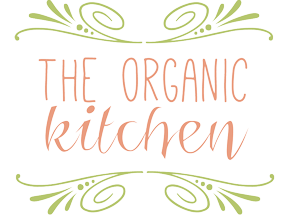

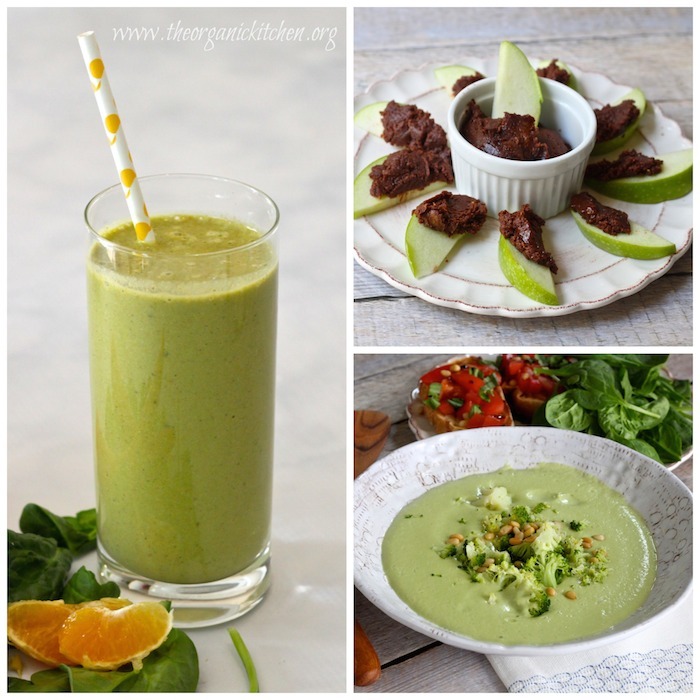


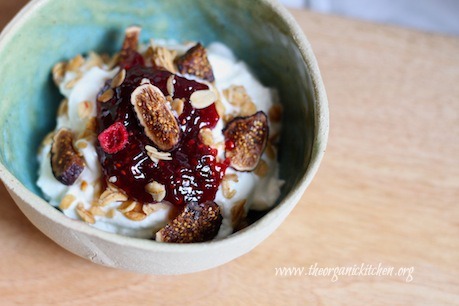

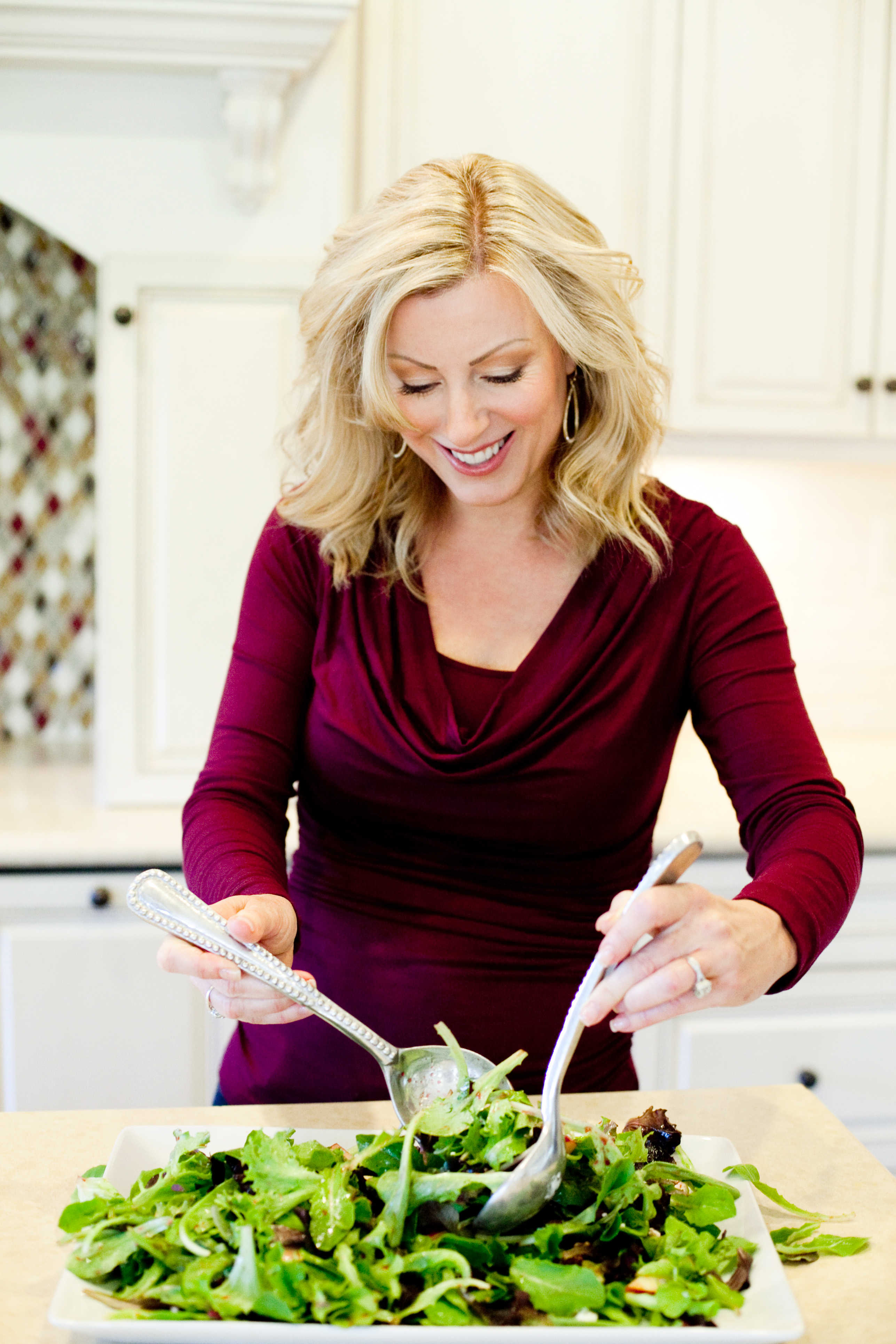
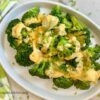
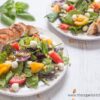
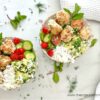

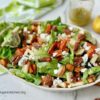

Wonderful post ~ Congrats Linda, Samantha, Ricki and Megan on your commitment to live your best life ~ and sharing the dietary choices you’ve made with all of us!
VERY inspiring and filled with super ideas.
Thank you ~ C
I loved reading this post. So fun to learn more about all of these lovely bloggers and the diets too. Thanks to all of you for sharing your experiences with us.
What amazing outcomes everyone has had! Thank you so much for sharing these inspiring stories!
I loved reading the success stories, each a little different, yet similar in certain respects. The varying levels of commitment are important to read about too, like your hubby!! SO realistic and helpful. It’s easy to lax on a regimen when you start feeling better. It is so often our symptoms that make us stick with a diet. Thanks, Linda; so helpful!!
Thank you Megan for your wonderful contribution. I am so glad you are healing. My daughter lindsay is now grain free. She committed to a month. I am hoping she’ll stick to it longer!
Tell it like it is!
This is great. It is so nice to hear real life stories and how people have success with diet changes.
Linda, What a inspiring and helpful post! I had to eliminate gluten and most grains from my diet to heal from food sensitivities and I feel so much better now. Thanks to you and all the fantastic bloggers who shared their personal stories and tips on how to be successful when you need to follow a special diet!
I have always been quite active and live healthy… With one vice- diet soda. Especially when it’s hot. About 8 years ago, I was diagnosed with 3 bulging discs, and given a Dailey anti-inflammatory medication. If I miss a day, I feel it in the morning. If I miss 2 days, it takes me 10 minutes to get out of bed. The pain would always be the reminder to take the medicine. So about 3 weeks ago I decided to cut way back on the soda. I haven’t cut it out completely, but mostly choose a healthier option. Then, while in a yoga class I realized I had missed many days of the medication and didn’t even feel it. The only change I had made was limiting soda. Guess what? I know there are other small but healthier options for me and I’m on a mission to see how much better I can feel. I’ll keep you posted!